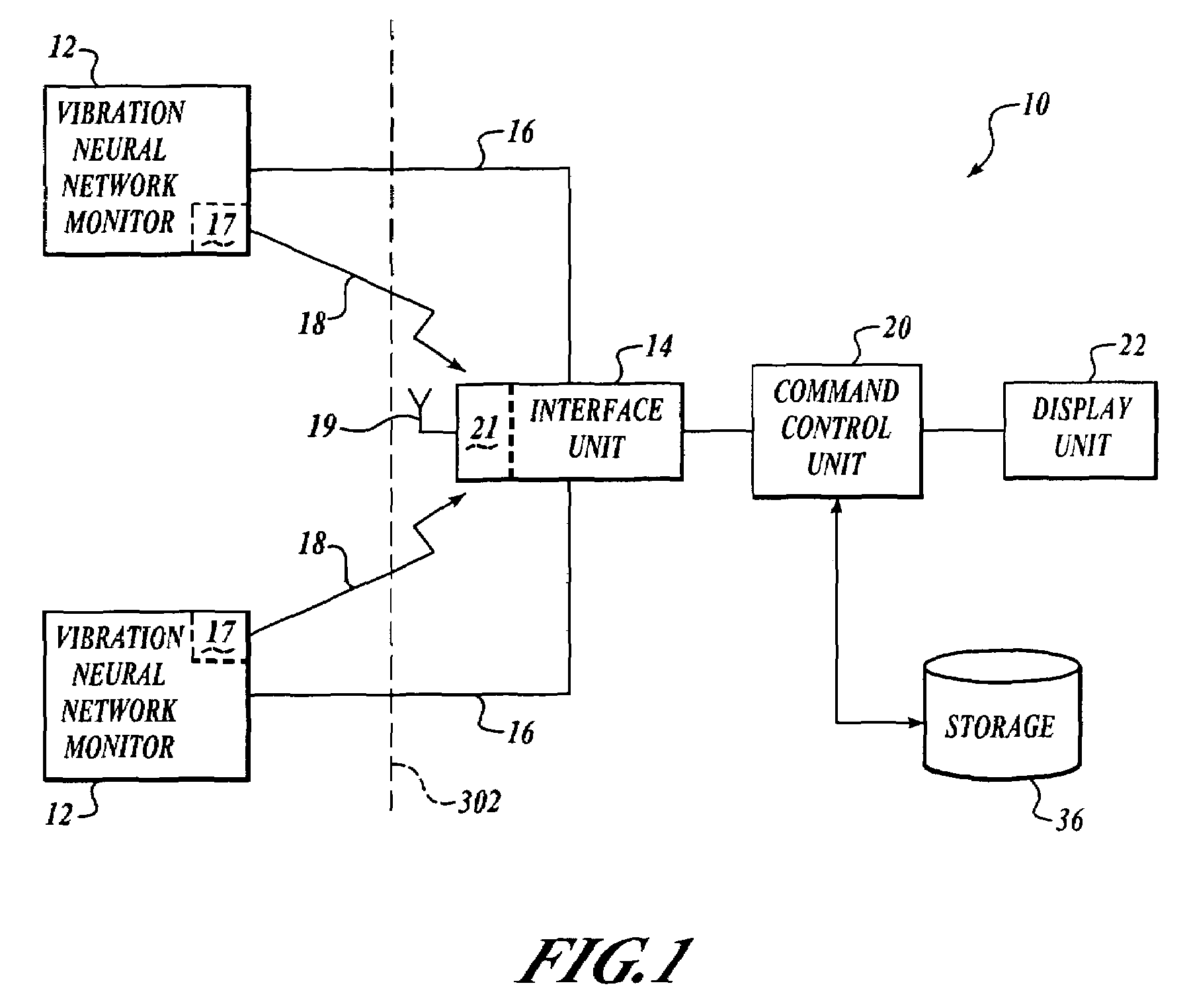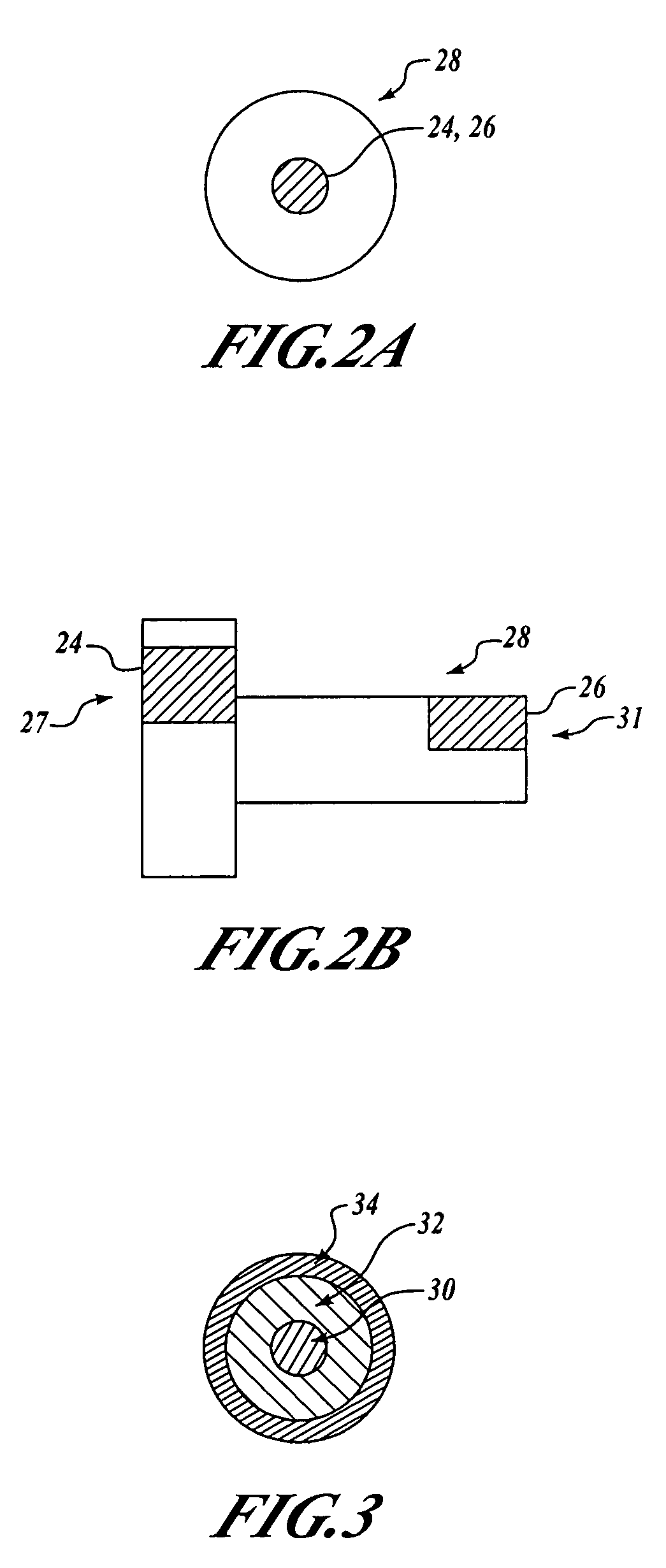Vibration engine monitoring neural network object monitoring
a neural network and engine technology, applied in the field of vibration engine monitoring, can solve problems such as engine bearing failure and output change, and achieve the effect of better tracking information about the engines in the fleet and better understanding of the health of the operating engin
- Summary
- Abstract
- Description
- Claims
- Application Information
AI Technical Summary
Benefits of technology
Problems solved by technology
Method used
Image
Examples
Embodiment Construction
[0036]By way of overview and referring to FIG. 1, an exemplary system 10 for monitoring vibration of an engine (not shown) includes a neural network 12 for each engine. Each neural network 12 includes transducers (not shown) that are mounted on the engine for sensing vibration of the engine. Each neural network 12 learns steady state operating parameters of its associated engine and monitors for excessive vibration. If excessive vibration is detected, the neural network 12 looks at a pattern of outputs from its transducers and determines a possible cause of the excessive vibration, such as without limitation a bird strike, foreign object damage (FOD), or bearing failure. If excessive vibration is not detected, the transducer output pattern is monitored for possible ice build-up on the fan section of the engine or for a possible over-speed event. An alert is generated when any of the above conditions are detected. The output pattern and the alert are provided by the neural networks 1...
PUM
 Login to View More
Login to View More Abstract
Description
Claims
Application Information
 Login to View More
Login to View More - R&D
- Intellectual Property
- Life Sciences
- Materials
- Tech Scout
- Unparalleled Data Quality
- Higher Quality Content
- 60% Fewer Hallucinations
Browse by: Latest US Patents, China's latest patents, Technical Efficacy Thesaurus, Application Domain, Technology Topic, Popular Technical Reports.
© 2025 PatSnap. All rights reserved.Legal|Privacy policy|Modern Slavery Act Transparency Statement|Sitemap|About US| Contact US: help@patsnap.com



